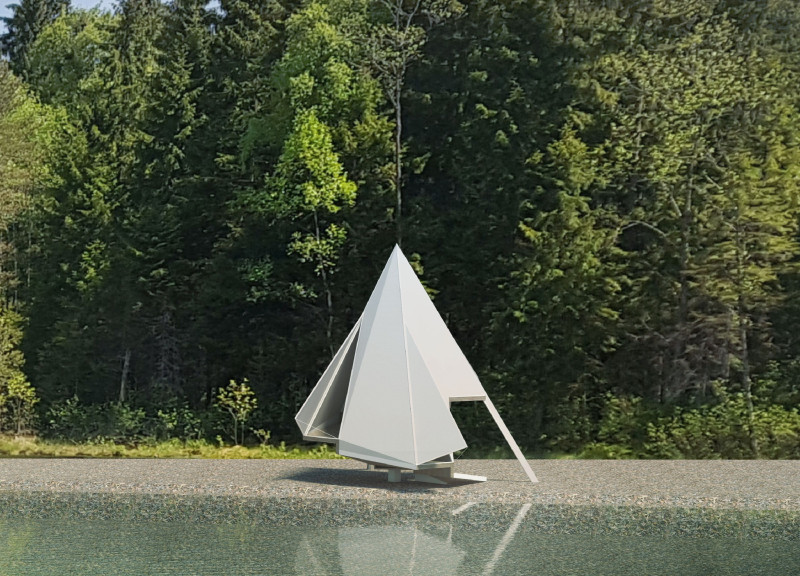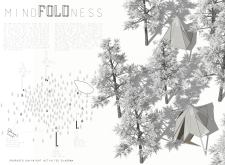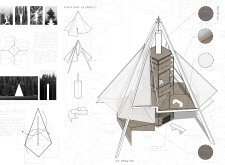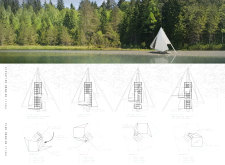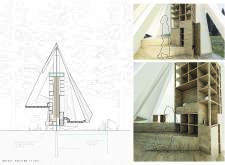5 key facts about this project
The MindFOLDness design is situated in a peaceful natural environment, created as a retreat focused on meditation and self-reflection. The cabin aims to promote mindfulness and calmness, incorporating elements inspired by Zen philosophy. The design uses the concept of Origami Meditation, translating the gentle art of folding into an architectural space that encourages users to connect deeply with their surroundings.
Design Concept
At the heart of the design is the idea of being fully present in each moment. The layout is divided into specific zones for walking and sitting meditation, allowing flexibility for various practices. Four main programs—Free, Fresh, Charge, and Sense—have been developed to cater to different facets of mental and physical wellness. These areas facilitate a personalized and meaningful experience for visitors.
Spatial Organization
The arrangement of the cabin is intentional, encouraging smooth movement between different meditative activities. The form of the structure resembles a pine tree, creating a visual link with the natural landscape. This relationship with nature is not just about how the cabin looks; it also invites users to connect with the environment in a more profound way. The Square Twist Pattern used in the deck design reflects the theme of origami, tying the visual elements together.
Materials and Structure
The construction relies on a prefabricated wood framework, balancing strength and ease of assembly. Local wood is utilized to firmly ground the cabin within its context. Features such as a fabric zip door provide adaptability to the space. White canvas fabric used throughout contributes to a light and spacious interior, allowing natural light to flow in and fostering a sense of tranquility.
Design Details
The core of the cabin includes essential systems that support the activities in each meditation zone. This careful layout helps move users easily from one area to another. Design details encourage reflection, making the environment thoughtful and engaging. The interplay of light and shadow within the cabin fosters a mindful atmosphere, inviting users to immerse themselves in an experience of calm and contemplation.


